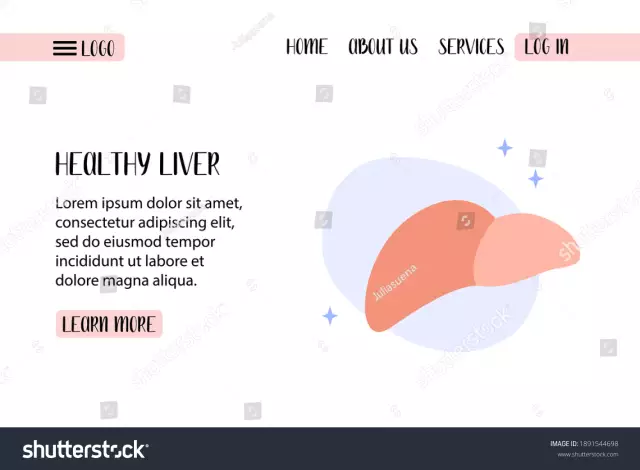- Author Rachel Wainwright [email protected].
- Public 2023-12-15 07:39.
- Last modified 2025-11-02 20:14.
Hereditary diseases

To date, more than four and a half thousand hereditary diseases are known, and each case has a solid evidence base that the disease is inherited, and nothing else. But, despite the high level of development of diagnostics, not all genetic pathologies have been studied to the extent of biochemical reactions. Nevertheless, the main mechanisms of the development of hereditary diseases are known to modern science.
There are three basic types of mutations:
- Genetic;
- Chromosomal;
- Genomic (predominantly sex-linked).
Mendel's fundamental genetic laws define dominant and recessive genes. After fertilization, the cells of the fetus contain half of the genes of the mother and half of the father, making up pairs - alleles. There are not many genetic combinations: only two. The defining traits are manifested in the phenotype. If one of the mutated genes of the allele is dominant, the disease manifests itself. The same thing happens with a dominant pair. If such a gene is recessive, this is not reflected in the phenotype. The manifestation of hereditary diseases transmitted by a recessive trait is possible only if both genes carry pathological information.
Chromosomal mutations are manifested by a violation of their division during meiosis. As a result of duplication, additional chromosomes appear: both sex and somatic.
Sex-linked hereditary abnormalities are transmitted through the sex X chromosome. Since in men it is presented in the singular, all males in the genus have manifestations of the disease. Whereas women who have two sex X chromosomes are carriers of the damaged X chromosome. For the manifestation of a hereditary sex-linked disease in women, it is necessary that the patient inherits both defective sex chromosomes. This rarely happens.
Biology of hereditary diseases
The manifestations of hereditary pathology depend on many factors. The traits inherent in the genotype have external manifestations (affect the phenotype) under certain conditions. In this regard, the biology of hereditary diseases divides all genetically determined diseases into the following groups:
- Manifestations that do not depend on the external environment, upbringing, social conditions, well-being: phenylketonuria, Down's disease, hemophilia, sex chromosome mutations;
- Hereditary predisposition, which manifests itself only under certain conditions. Environmental factors are of great importance: the nature of the diet, occupational hazards, etc. Such diseases include: gout, atherosclerosis, peptic ulcer disease, arterial hypertension, diabetes mellitus, alcoholism, tumor cell growth.
Sometimes, signs of even non-inherited diseases are found in the children of sick people. This is facilitated by the same susceptibility among relatives to certain factors. For example, the development of rheumatism, the causative agent of which has nothing to do with genes and chromosomes. Nevertheless, children, grandchildren and great-grandchildren are also susceptible to systemic connective tissue damage by β-hemolytic streptococcus. Chronic tonsillitis accompanies many people all their lives, but does not cause hereditary diseases, while those who have relatives with rheumatic lesions of the heart valves develop a similar pathology.
Causes of hereditary diseases
The causes of hereditary diseases associated with gene mutations are always the same: gene defect - enzyme defect - lack of protein synthesis. As a result, the body accumulates substances that were supposed to turn into necessary elements, but in themselves, as intermediate products of biochemical reactions, are toxic.
For example, the classic hereditary disease, phenylketonuria, is caused by a defect in a gene that regulates the synthesis of an enzyme that converts phenylalanine to tyrosine. Therefore, with phenylketonuria, the brain suffers.
With lactase deficiency, intestinal upset occurs. Intolerance to raw cow's milk is a fairly common phenomenon, and it also belongs to hereditary diseases, although, under certain conditions, some people may compensate, and the production of lactase is improved due to the active "training" of intestinal cells.
Chromosomal abnormalities appear regardless of the conditions. Many children are simply not viable. But Down's disease refers to those hereditary diseases in which the external conditions of the environment can be so favorable that the sick become full members of society.

Defects in the division of sex chromosomes are not accompanied by fatal complications, since they do not affect somatic signs. All vital organs do not suffer from such hereditary diseases. Damage is found at the level of the genitals, and often only internal. Sometimes it does without them. For example, in triplo-ex syndrome, when a woman has an extra X chromosome, the ability to conceive is preserved. And children are born with a normal set of sex chromosomes. The situation is similar with the additional Y chromosome in men.
The mechanism of development of hereditary diseases lies in the combination of genes: dominant and recessive. Their different combination is unequally manifested in the phenotype. For the development of the disease, one mutated dominant gene is enough, or a pathological recessive pair in one allele.
Prevention of hereditary diseases
Specialists of genetic centers are engaged in the prevention of manifestations of genetic pathology. In the antenatal clinics in large cities, there are special rooms of geneticists who advise future married couples. Prevention of hereditary diseases is carried out by drawing up genealogical maps and decoding special analyzes.
Found a mistake in the text? Select it and press Ctrl + Enter.






